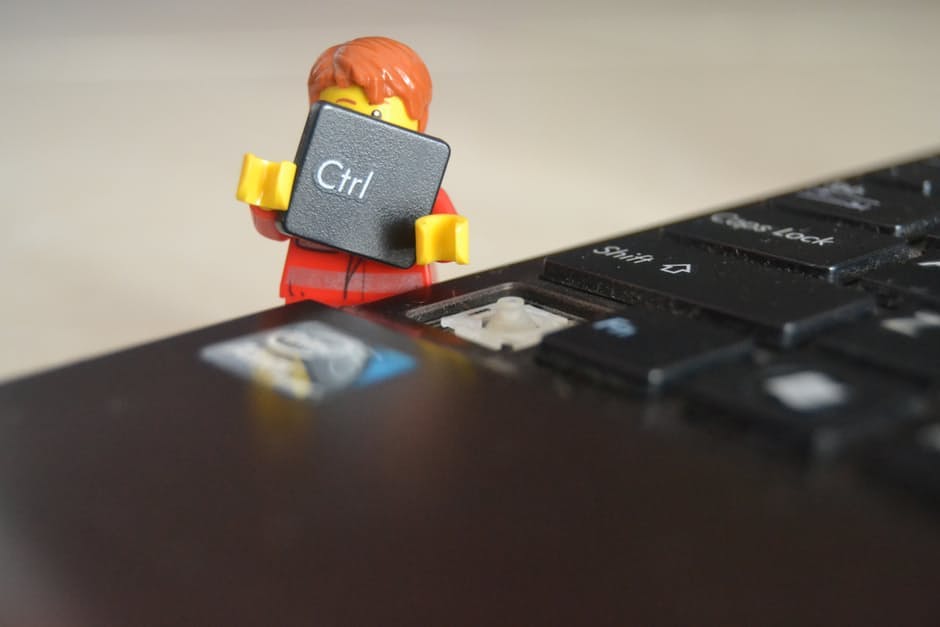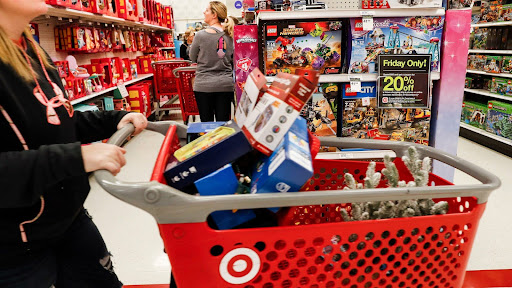Want to work for a high-powered tech company? Of course you do. Fortune named Google the number one company in the world to work 7 times in the past decade and companies like Twitter and Facebook rank highly in the top 25. But how are you going to ace that interview? Notorious for the week-long onslaughts potential employees are put through, some of the largest and most important tech companies in the world are also known for asking some really weird and out there questions to separate the wheat from the chaff.
Here’s some of the wackiest ones, and a few answers.
“If you could be any kind of sandwich, which would you be?”
A long-famous Google question, some sort of sandwich-based query has been adopted by a surprising number of large companies, with one major consulting firm asking applicants how they would go about making a tuna sandwich. So preparing some sort of malleable sandwich-based answer wouldn’t be that bad of an idea. Personally, I like a good falafel wrap: modern, vegetarian and it’s something somebody interviewing you probably had for lunch. And it reflects the diverse background your skills will bring to the company!
[source]
“Have you ever been on a boat?”
Asked by Applied Systems, a company right at the forefront of insurance technology, this question, on the surface, seems to be asking about worldliness and alternative technological prowess. Do you have the capacity to direct a nautical vessel, an image-rich with mythic portent that stretches from Moby Dick to Chris Hemsworth? But it’s also about something deeper than that, about your connection to systems larger and greater than yourself, charted and uncharted terrain that bristles at the thought of being known. Maybe you haven’t been to sea, or even been inside a frigate. But you’re inside this small boat that some call Earth and we’re just dangling in a sea called the Milky Way.
I would talk about fishing with my proverbial old man, though.
[source]
“A man pushed his car to a hotel and lost his fortune. What happened?”
Another deep dive from the Google crew, this time secretly testing your on-hand knowledge of beloved American board games. He’s playing Monopoly, of course!
While it’s likely that Google won’t be keeping this one on their clipboards for very long now, it’s useful to keep a Jeopardy!-like bank of pop-trivia on hand and keep your mind out floating for strange answers.
[source]
“What’s your favorite ’90s jam?”
More on the pop culture beat, this retro-ask was put by the web design people at Squarespace and is also a good chance to show your attitude and brag about how popular you were in middle school. While “Smells Like Teen Spirit” might be the first number that comes to your head, “here we are now/entertain us” might send the wrong message. “I Want It That Way” would certainly say something about your decision-making prowess. Anything by Smash Mouth works also.
It’s also worth having a happy-go-lucky list of ’90s cartoons, movies and Disney princesses.
[source]
“Have you ever stolen a pen from work?”
Asked by Jiffy Software, another website and app development company on the cutting edge, this question is a gut test of your honesty, are you the kind of person who steals pens? Or are you the kind of person who lies about it? Go for the truth with this one, which is a yes. Even if you’ve never so much as stolen a staple.
Want to be really cutting edge? Say you don’t use pens anymore. They’re so 2005.
[source]
“Why is a tennis ball fuzzy?”
Another trick one, this time asked by the photocopy kings at Xerox. While there’s an easy, real answer to this one—who doesn’t know that it is its fuzz that gives the ball traction and keeps it from bouncing too high?—it’s probably useful to think of a few relevant tangents you can take with an oddball like this one. Maybe you’re applying for a marketing position and can wire it into a wild marketing spin about how the fuzz of tennis balls give the man edge over less interesting ricochet balls. Go wild.
[source]
“Why is the Earth round?”
Another ostensibly pop-science number that Twitter has been known to ask prospective software engineers. We all know the story with Copernicus, Columbus and the diminishing horizon, but this question seems to be getting its momentum by wanting to know why. What general advantages can you think of to our roundness besides not falling off the edge?
Or you could just be the smarty who tells them that the earth isn’t actually round, you know?
[source]
“If you had a choice between two superpowers – being invisible or flying – which would you choose?”
This timeless Seinfeld-esque classic was asked by Microsoft and for a pretty high level position. Personally, I’d go with flying without a second of deliberation. Invisibility is cool and all, but how are you going to give that presentation if no one can see you?
[source]
“If you were a pizza delivery man, how would you benefit from scissors?”
This curveball was reported to be thrown by mighty behemoth Apple. Perhaps food delivery is the next world they’re about to conquer or the scissors represent the kind of industry change that slashes through things. Maybe some way of doing business?
In the world of pizza delivery, I’d suggest scissors be used to divide portions readily, selling slices on the spot?
[source]
“What would you do if you were the one survivor in a plane crash?”
This rather morbid scenario was asked by the caring people over at Airbnb, the rising and somewhat controversial hospitality marketplace. While a bit wild of a scenario, it’s not too hard to tie this one to the business at hand: making sure your temporary stay is the best it can be. Your answer can include: checking in at the new locale on social media, making sure to not touch any valuables that aren’t yours, and drafting your feedback on the experience.
[source]
Go get ’em!
string(7818) "
Want to work for a high-powered tech company? Of course you do. Fortune named Google the number one company in the world to work 7 times in the past decade and companies like Twitter and Facebook rank highly in the top 25. But how are you going to ace that interview? Notorious for the week-long onslaughts potential employees are put through, some of the largest and most important tech companies in the world are also known for asking some really weird and out there questions to separate the wheat from the chaff.
Here's some of the wackiest ones, and a few answers.
"If you could be any kind of sandwich, which would you be?"
A long-famous Google question, some sort of sandwich-based query has been adopted by a surprising number of large companies, with one major consulting firm asking applicants how they would go about making a tuna sandwich. So preparing some sort of malleable sandwich-based answer wouldn't be that bad of an idea. Personally, I like a good falafel wrap: modern, vegetarian and it's something somebody interviewing you probably had for lunch. And it reflects the diverse background your skills will bring to the company!
[source]
"Have you ever been on a boat?"
Asked by Applied Systems, a company right at the forefront of insurance technology, this question, on the surface, seems to be asking about worldliness and alternative technological prowess. Do you have the capacity to direct a nautical vessel, an image-rich with mythic portent that stretches from Moby Dick to Chris Hemsworth? But it's also about something deeper than that, about your connection to systems larger and greater than yourself, charted and uncharted terrain that bristles at the thought of being known. Maybe you haven't been to sea, or even been inside a frigate. But you're inside this small boat that some call Earth and we're just dangling in a sea called the Milky Way.
I would talk about fishing with my proverbial old man, though.
[source]
"A man pushed his car to a hotel and lost his fortune. What happened?"
Another deep dive from the Google crew, this time secretly testing your on-hand knowledge of beloved American board games. He's playing Monopoly, of course!
While it's likely that Google won't be keeping this one on their clipboards for very long now, it's useful to keep a Jeopardy!-like bank of pop-trivia on hand and keep your mind out floating for strange answers.
[source]
"What's your favorite '90s jam?"
More on the pop culture beat, this retro-ask was put by the web design people at Squarespace and is also a good chance to show your attitude and brag about how popular you were in middle school. While "Smells Like Teen Spirit" might be the first number that comes to your head, "here we are now/entertain us" might send the wrong message. "I Want It That Way" would certainly say something about your decision-making prowess. Anything by Smash Mouth works also.
It's also worth having a happy-go-lucky list of '90s cartoons, movies and Disney princesses.
[source]
"Have you ever stolen a pen from work?"
Asked by Jiffy Software, another website and app development company on the cutting edge, this question is a gut test of your honesty, are you the kind of person who steals pens? Or are you the kind of person who lies about it? Go for the truth with this one, which is a yes. Even if you've never so much as stolen a staple.
Want to be really cutting edge? Say you don't use pens anymore. They're so 2005.
[source]
"Why is a tennis ball fuzzy?"
Another trick one, this time asked by the photocopy kings at Xerox. While there's an easy, real answer to this one—who doesn't know that it is its fuzz that gives the ball traction and keeps it from bouncing too high?—it's probably useful to think of a few relevant tangents you can take with an oddball like this one. Maybe you're applying for a marketing position and can wire it into a wild marketing spin about how the fuzz of tennis balls give the man edge over less interesting ricochet balls. Go wild.
[source]
"Why is the Earth round?"
Another ostensibly pop-science number that Twitter has been known to ask prospective software engineers. We all know the story with Copernicus, Columbus and the diminishing horizon, but this question seems to be getting its momentum by wanting to know why. What general advantages can you think of to our roundness besides not falling off the edge?
Or you could just be the smarty who tells them that the earth isn't actually round, you know?
[source]
"If you had a choice between two superpowers - being invisible or flying - which would you choose?"
This timeless Seinfeld-esque classic was asked by Microsoft and for a pretty high level position. Personally, I'd go with flying without a second of deliberation. Invisibility is cool and all, but how are you going to give that presentation if no one can see you?
[source]
"If you were a pizza delivery man, how would you benefit from scissors?"
This curveball was reported to be thrown by mighty behemoth Apple. Perhaps food delivery is the next world they're about to conquer or the scissors represent the kind of industry change that slashes through things. Maybe some way of doing business?
In the world of pizza delivery, I'd suggest scissors be used to divide portions readily, selling slices on the spot?
[source]
"What would you do if you were the one survivor in a plane crash?"
This rather morbid scenario was asked by the caring people over at Airbnb, the rising and somewhat controversial hospitality marketplace. While a bit wild of a scenario, it's not too hard to tie this one to the business at hand: making sure your temporary stay is the best it can be. Your answer can include: checking in at the new locale on social media, making sure to not touch any valuables that aren't yours, and drafting your feedback on the experience.
[source]
Go get 'em!
"












